Kouign-amann are an indulgent crisp and flaky pastry made from layers of caramelized laminated dough with a fluffy, buttery interior.
Jump to:
We are on a little bit of a laminated pastry roll... Following my cinnamon cruffins the next laminated dough recipe is the kouign-amann. If you have never had a kouign-amann you are seriously missing out!
Be transported to a bakery in the streets of Paris, France with this buttery, sweet caramelized pastry!
What is a Kouign-Amann?
Originating in Brittany these pastries are named after the Brenton words 'cake' and 'butter', 'kouign' and 'amann'. The name pretty much says it all, these are pastries made from layers of laminated dough rolled in sugar before being baked until crisp, flaky, and caramelized with a soft and buttery center.
These are definitely not an everyday breakfast item... but a couple of times a year should be okay right?!
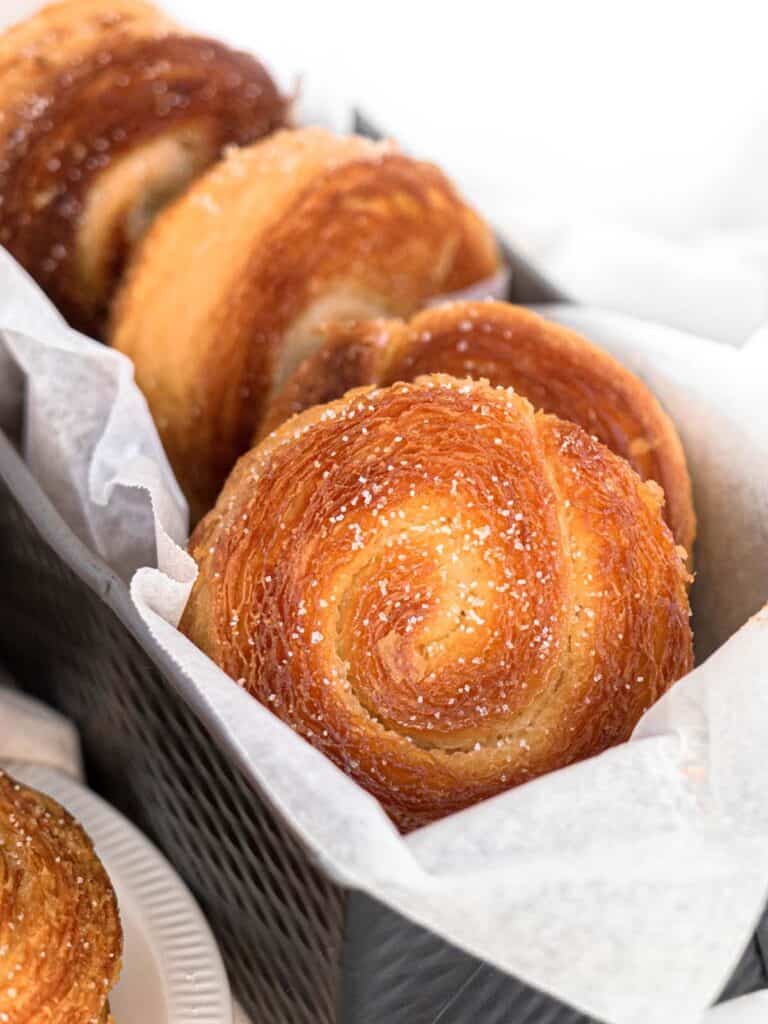
How to Laminate the Dough
The defining factor between a kouign-amann and a regular pastry is the sugar that has been rolled into the dough.
This happens in the final fold of making the dough. At this point, a layer of caster sugar should be sprinkled over the dough and pressed into the dough with a rolling pin. The dough then undergoes its final fold before being chilled and cut into shapes.
A breakdown of the kouign-amman folding process:
- Enclose the butter cake
- Single fold and chill
- Double fold and chill
- Scatter sugar over the dough and perform another single fold
- Scatter sugar over the dough and roll out
- Cut and roll into shape
Head to the next section to see illustrated diagrams of each of the fold for a better understanding of how to laminate the dough.
Illustrated Lamination Process
Enclosing the butter
There are a couple of different ways to enclose the butter. I find the easiest way is to enclose the butter like an envelope. Place the rectangle of butter diagonally on your rolled-out dough.
The corners of the butter should just touch the edges of the dough sheet. Then fold each corner of the dough down towards the center of the butter slab. The edges of the dough should join in the center of the butter and you can then pinch the edges together to enclose the butter.
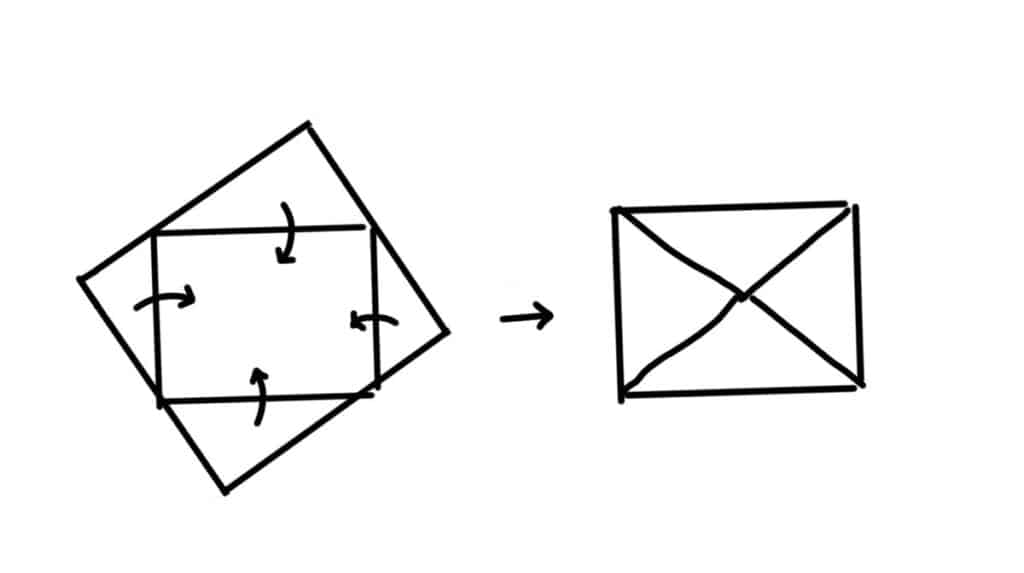
Single fold
Single folds are the easiest. Simply roll your dough out into a rectangle and visually divide the sheet into thirds. Fold the bottom third up, then the top third down. Easy!
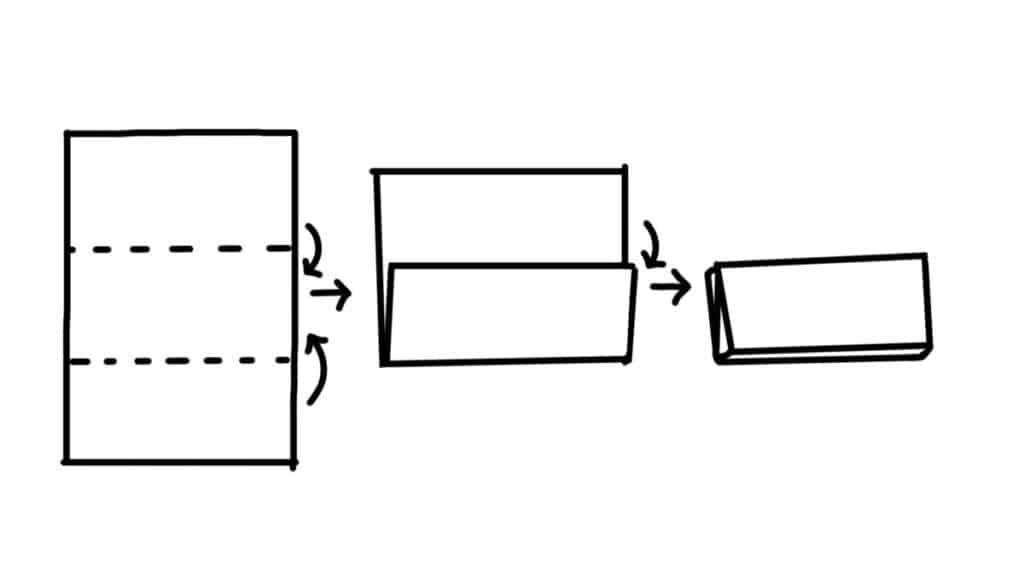
Double fold
Double folds, also known as book folds are a little more challenging.
After rolling the dough out visually divide the sheet into fourths. Fold each side towards the center line. Then fold that in half. This is also called a book fold because it looks like a book!
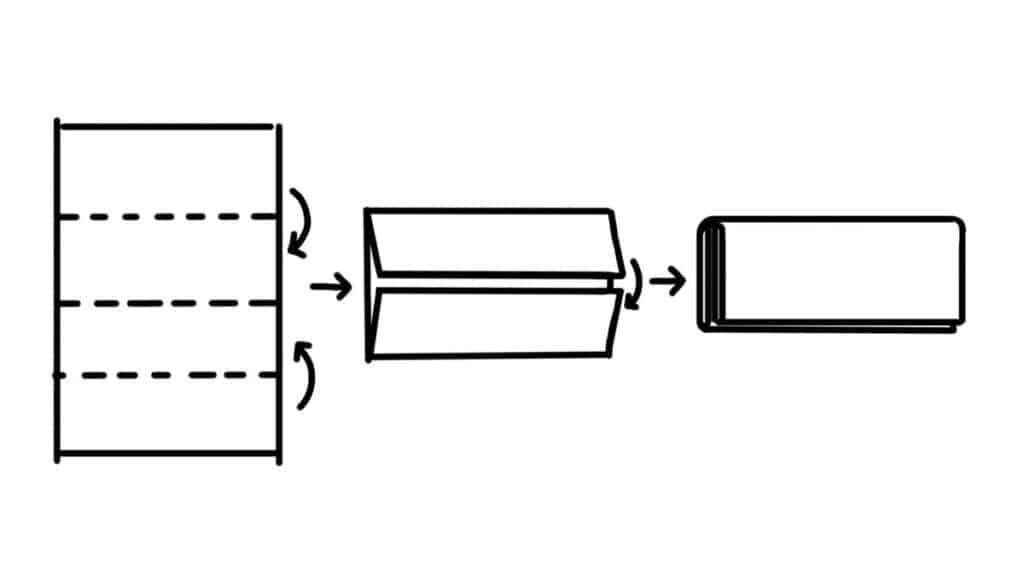
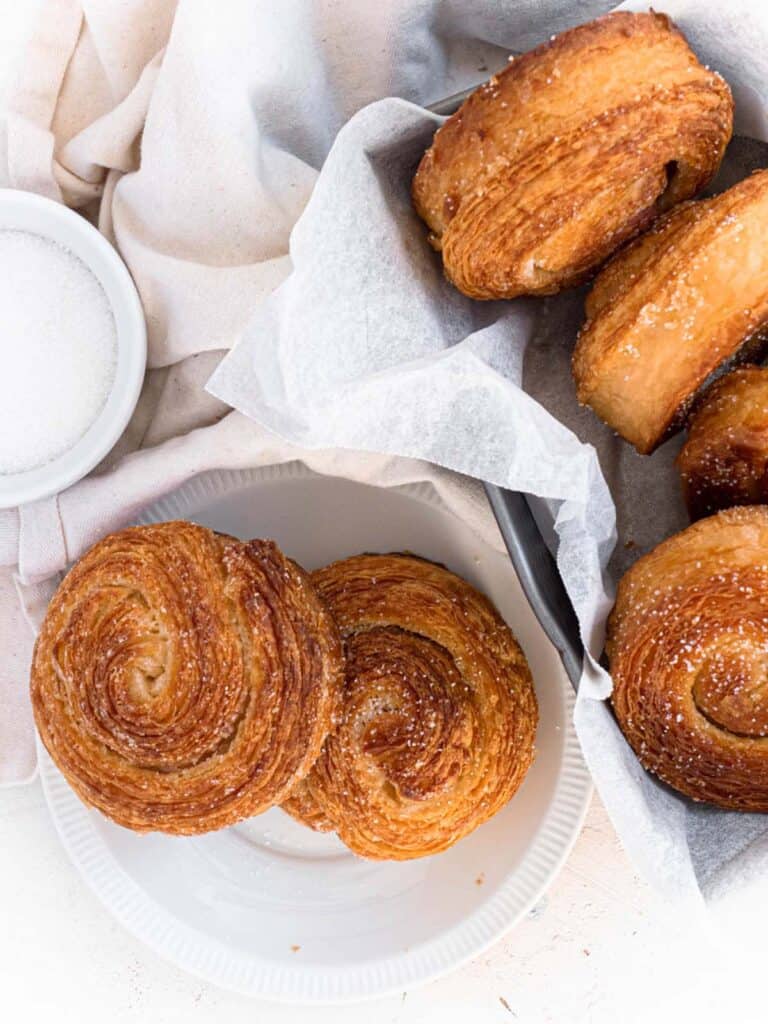
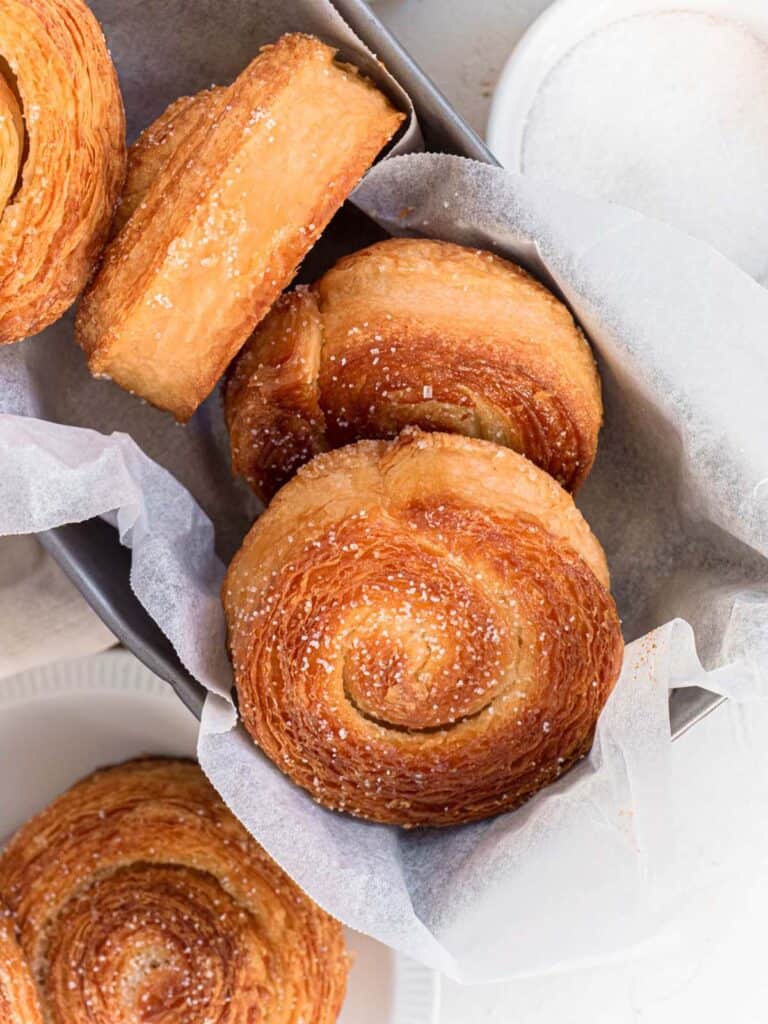
How to shape Kouign-amann
The way that I have shaped my kouign-amann is a little different from the traditional method. Traditionally the dough is cut into squares and pressed into a ring mold with the corners of each square poking out the top. This creates a rustic look with the corners of the pastry bunched at the top.
I chose to roll the dough into a swirl. This way it allows even caramelization in all the layers and creates a beautiful golden brown bottom. But the way you shape them is up to you!
Rolling the dough into a swirl
If rolling it I like to give the dough an extra layer of sugar, pressing it in before rolling it up into a tight swirl. I then give the swirl an extra toss in caster sugar before placing it in the center of a larger ring. The extra coating of sugar gives for an even more caramelized crust.
Make sure you use a ring that is larger than the swirl itself. This is important as the dough will expand while proofing, allowing the layers of dough and butter to separate while filling the area of the ring. This gives the pastry extra flaky layers and a fluffy interior.
If you use a ring that is too small you risk compressing your dough, preventing it from opening up into all its layers. It can also cause your pastry to rise unevenly out of the ring, losing its pretty swirl.
Ingredients for the dough
Bread flour
Make sure you use bread flour with a protein content of at least 11%. The protein content in the flour is important as it helps give the dough structure and helps it keep its shape as it rises
Sugar
The sugar in this recipe acts as more as a fuel than a sweetener. Yeast needs sugar in order to work its magic, so the sugar here will help the yeast produce gas and lets the kouign-amann rise.
Salt
Salt helps to strengthen the gluten strands in the bread flour. This is important as it gives more strength to the integrity of the pastries for a taller, fluffier result.
Water
Water gives the flour hydration, allowing it to form a dough.
Milk
Milk gives the flour hydration, as well as fat and sugar. The sugar helps fuel the yeast and the fat gives the dough suppleness. Make sure that both the water and milk are lukewarm when used. This helps activate the yeast.
Butter
Butter is needed to give the bread that buttery, delicious fragrance. It also gives the resulting pastry that tender mouthfeel.
Instant yeast
I like to use instant yeast as it is easy to use. There is no need to activate it before use, just add it directly to your dry ingredients!
If you decide to use active yeast you can use the same amount, but make sure you activate it before adding. You can activate it by adding it to your lukewarm milk and letting it sit for 5 minutes. Once the milk has bubbled up it's ready to add to your dry ingredients.
Excess flour
One of the most important ingredients is excess flour! Flour is needed to dust your work surface.
Not only does this prevent your dough from sticking to your counter, but it also helps it glide under the rolling pin. This makes the process of rolling out your dough significantly easier.
Frequently Asked Questions
How do you reheat kouign-amann?
Pastries are always best fresh from the oven, but with a larger batch, it isn't possible to eat all of them freshly baked. Once they have cooled down they will remain crisp for a couple of hours, but afterward, they tend to absorb moisture and become soggy and slightly stale.
I find the best way to consume them after they have cooled is to reheat them in an air fryer. 5 minutes on 200C / 390F returns them to their crispy and flaky state.
If you don't have an airfryer an oven is a great option. 10-12 minutes in an oven at 220C / 390F is perfect!
How long do kouign-amann last?
These are best when eaten freshly baked, but they are still delicious over the next few days.
You'll find that the next day they tend to be a little stale. This isn't a problem though, just reheat them as above to bring them back to their former glory.
If you have any leftovers you can store them in the refrigerator in an airtight container for 3-4 days.
Can you freeze kouign-amann?
Yes, you can! Once they are baked you can wrap them individually and freeze them for up to a month. Freezing them helps them retain that fluffy interior without becoming too stale.
If you are reheating it from frozen simply remove it from the freezer, defrost and reheat as above.
Can I use different kinds of sugar?
Yes, you definitely can! I like to use caster sugar, aka superfine sugar, as the sugar granules are smaller. This helps the sugar dissolve into the dough and create an extra golden caramelized crust.
If you like to have large sugar crystals you can use regular sugar or even raw/turbinado sugar. This will give the caramelized areas of your pastry an extra sweet crunch.
I wouldn't recommend using icing or confectioners sugar as it is too fine.
Why are my pastries so greasy?
If there is a lot of butter leaking out of your pastries as they are proofing your proofing environment was most likely too warm. This causes the butter to melt and leak out of your pastries.
The excess greasiness that you are finding after the pastries have been baked is that melted butter, which typically pools around the base of your kouign-amann.
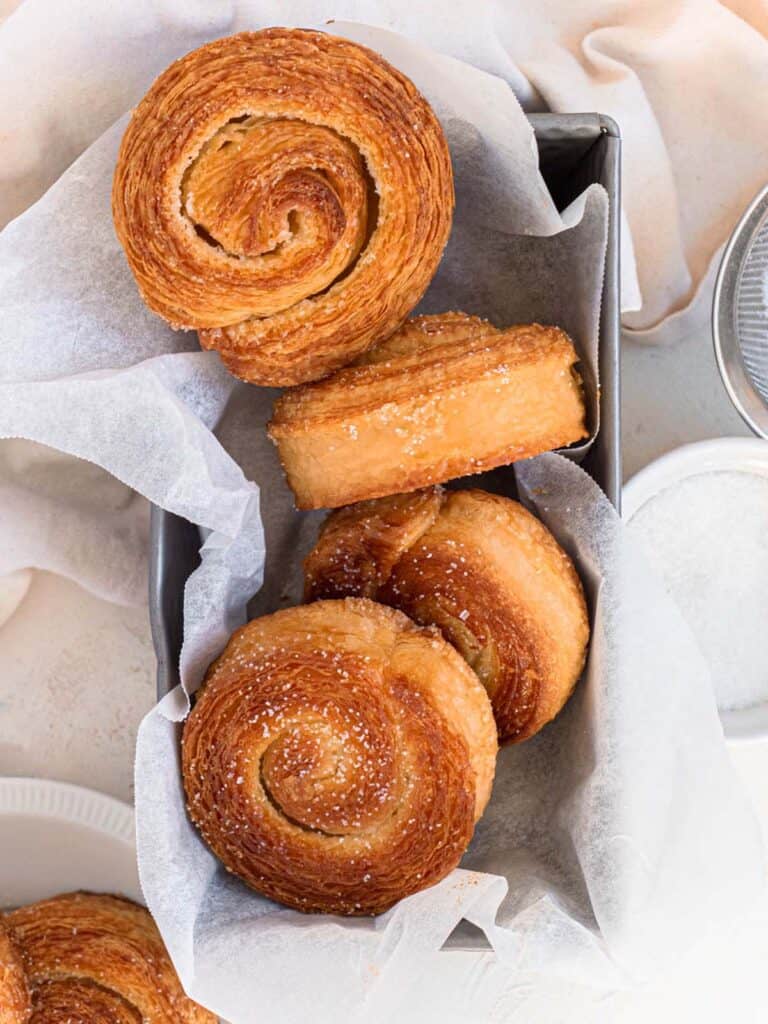
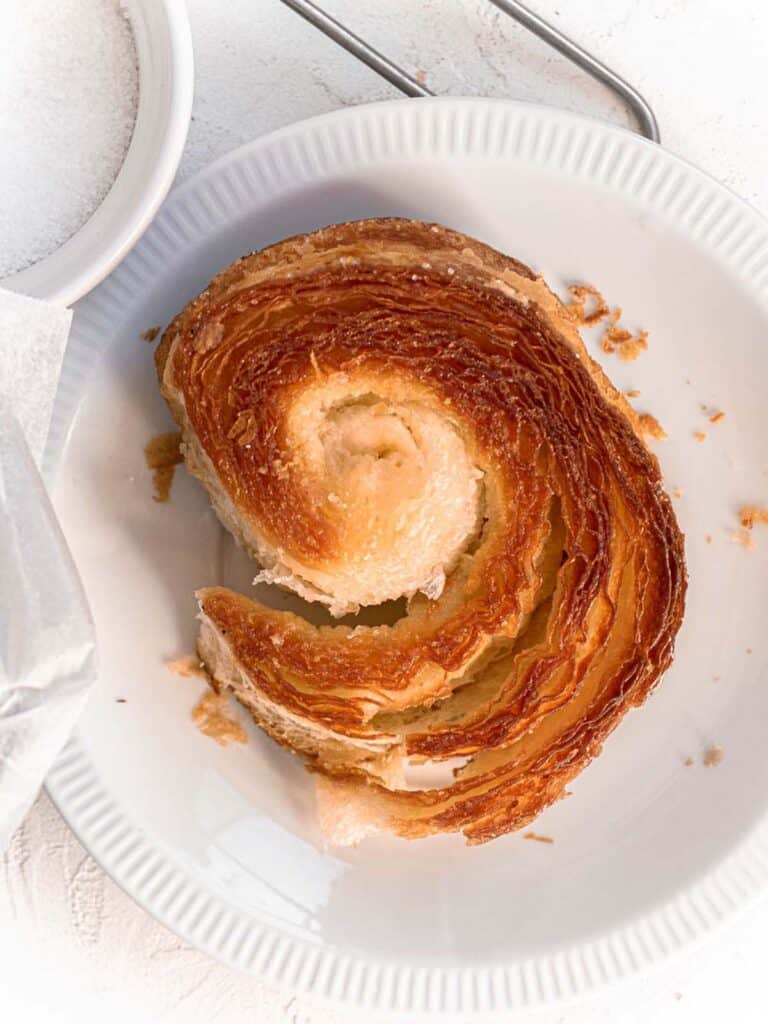
Let's Get Baking!
I hope you all love these kouign-amann as much as I do. Who needs a pastry chef when you can be your very own!
These may be a little indulgent, but after all the hard work and effort you put in to make these I think they are more than well deserved.
If you liked this recipe make sure to leave me a comment and rating down below, I would love to know how you went.
Also, don't forget to tag me on Instagram @catherine.desserts and hashtag #cattycakes so I can see and share your desserts. Follow me on Facebook, Pinterest, Youtube, and TikTok for more of my baking creations and updates! Until next time... happy baking!
PrintKouign-Amann
An indulgent crisp and flaky pastry made from layers of caramelised laminated dough with a fluffy, buttery interior.
- Prep Time: 120 minutes
- Cook Time: 20 minutes
- Total Time: 2 hours 20 minutes
- Yield: 16 1x
- Category: Bread
- Method: Advanced
- Cuisine: French
Ingredients
Dough
- 500g Bread flour (3 ¾ cup)
- 55g White sugar (¼ cup)
- 5g Salt (1 ½ tsp)
- 130g Water (½ cup 2 tsp)
- 130g Whole milk (½ cup)
- 50g Unsalted butter (I), softened (¼ cup)
- 10g Instant yeast (2 ¼ tsp)
Assembly
- 250g Unsalted butter (II), softened (1 cup 2 tbsp)
- Caster sugar for sprinkling and rolling
Instructions
Dough
- Combine flour, sugar, salt and yeast in the bowl of a stand mixer fitted with a dough hook, mix to combine
- Add water and milk to the flour mix on low until the dough comes together into a rough ball
- Add the butter, increase speed to medium-high and continue to mix for 10 minutes
- The dough should be smoother and more elastic, but not completely smooth
- Remove dough, grease bowl and cover with cling wrap
- Place in the fridge to proof overnight, or a minimum of 6 hours
Butter Block
- Fold a large sheet of baking paper into a 20 x 15cm rectangle
- Add the butter to the centre of the baking paper and fold up the rectangle to enclose the butter
- Using a rolling pin roll the butter into the shape of the baking paper, making sure to get into the corners as well
- Place the butter in the fridge to set for 30-45 minutes. The butter should be chilled and firm, but not rock solid
Assembly
- Remove your dough from the fridge and roll out into a rectangle that will enclose your butter block
- Fold the corners of the dough in and pinch the edges to fully enclose the butter in the dough
- Flip the dough so the edges face the benchtop and roll the dough out into a 20 x 60cm rectangle
- Flip the dough over again so the edges face up and perform a single fold by visually dividing the dough into thirds and folding the top and bottom third into the centre
- Cover in cling wrap and place in the fridge for 20 minutes
- Remove from fridge and roll out into a 20 x 60cm rectangle
- Perform a double fold by visually dividing the dough into fourths and folding the top and bottom forth towards the centre line, then fold in half
- Cover in cling wrap and place in the fridge for 20 minutes
- Remove from fridge and roll into a 20 x 60 cm rectangle
- Sprinkle generously with caster sugar and press the sugar into the dough with the rolling pin
- Perform a single fold again (see step 4)
- Cover in cling wrap and place in the fridge for 45 minutes
- Remove from fridge and roll into a 25 x 40cm rectangle
- Sprinkle generously with caster sugar and press the sugar into the dough
- Trim the edges, then cut the dough into sixteen 2.5cm strips
- Roll them into swirls
- Roll each swirl in more caster sugar
- Place each swirl into an 8cm tart ring and cover the tray loosely with cling wrap*
- Leave at room temperature to proof for 1-2 hours, until puffy and 1.5X in size (the layers will begin to separate)
- Preheat the oven to 190C / 375F
- Bake for 18-20 minutes, until golden brown and caramelised
- Remove from oven and unmould
- Enjoy!**
Notes
* If you don't have a tart ring muffin tins work too! Roll the dough to a size that will fit in the tin
**These taste best freshly baked as they are crisp on the outside and fluffy on the inside. If enjoying once cooled pop them in an oven at 200C / 390F for 10 minutes, or an airfryer!


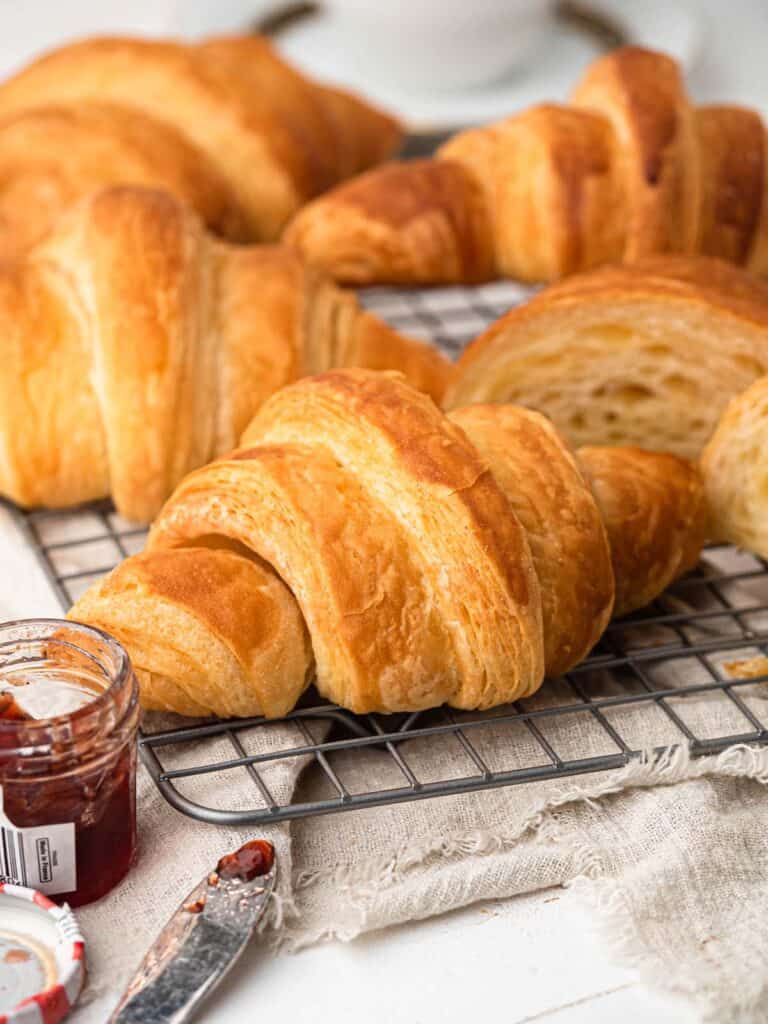
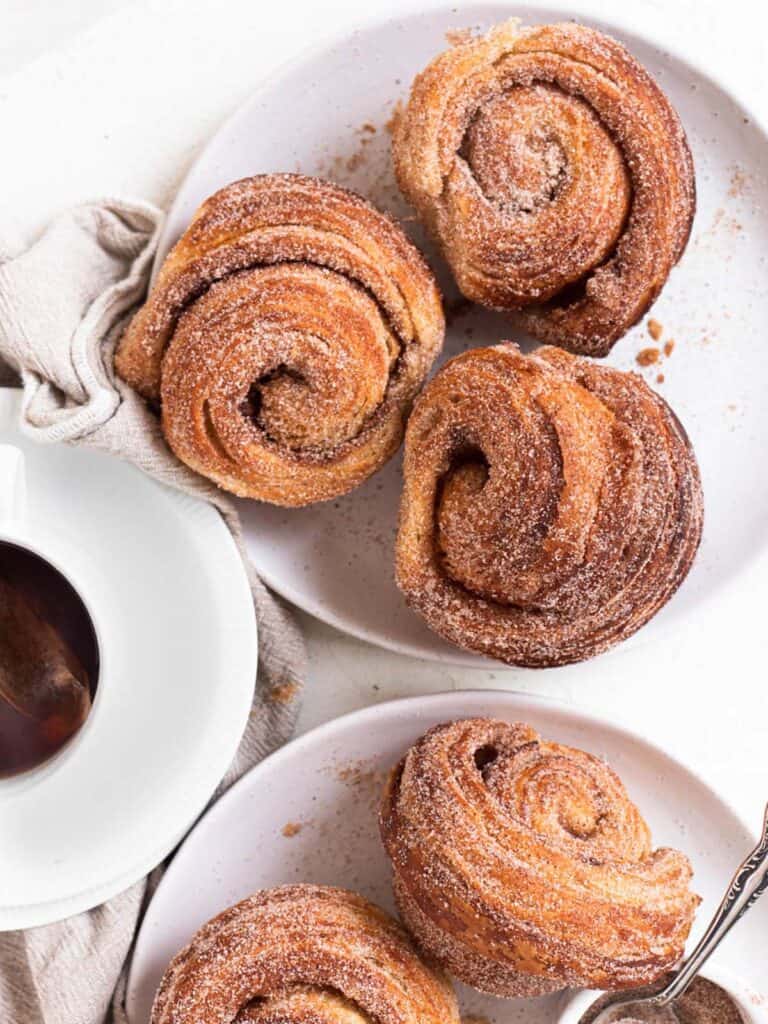
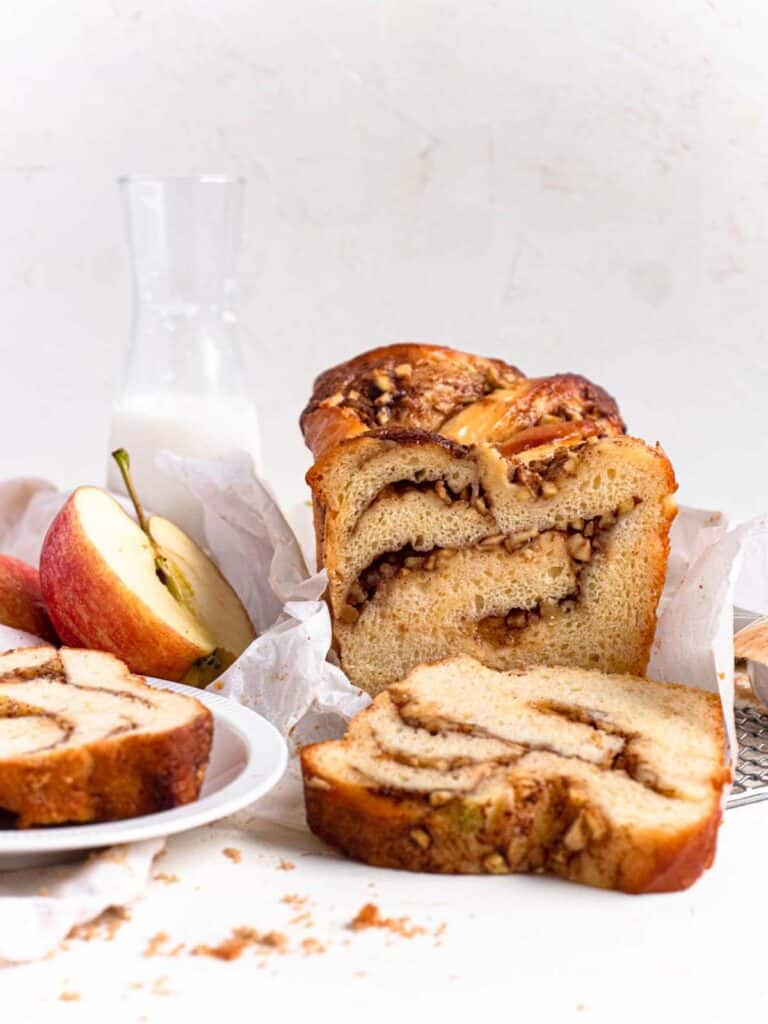
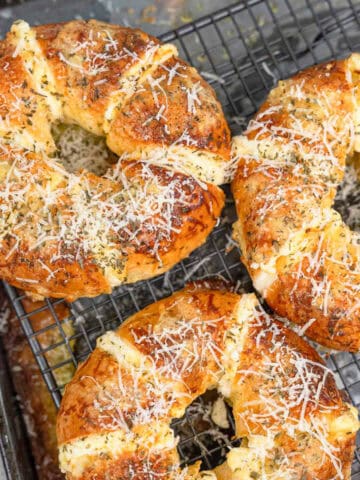
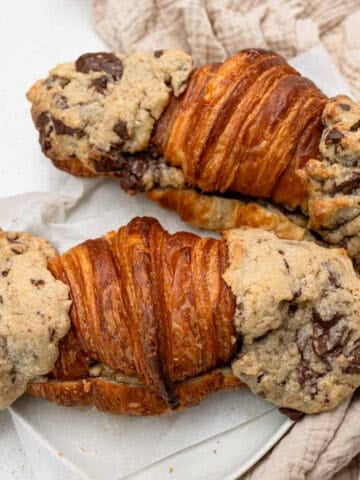


Charles
Love the recipe!
Small tweaks might be to season the sugar with a pinch of salt. Or use salted butter. Can give a nice salted caramel feel to it and using salt us also more traditional for this recipe I believe.
Also instead of rolls you could use a muffin tin, cut the dough into squares then fold the corners in and push it into the muffin tin. I usually butter and sprinkle sugar/salt into the muffin tin so when they come out the bottom have a nice shiny caramel glazing to them.
Catherine Zhang
Hi Charles! The salt is a great idea! Also love the tip about getting shiny caramel glazing to their bottoms. Glad you loved the recipe 😊